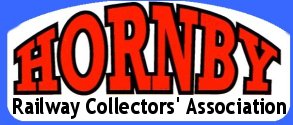Dublo Fact Sheet
| MANUFACTURER: Meccano Limited, at Binns Road, Liverpool 13. From 1938 till manufacture ceased in 1964. GAUGE: British "00" (16.5mm). DESIGNERS: Electrical design by Ronald Wyborn. Otherwise by Chief Designer Donald Smith and the Chief Draughtsman Peter Evenett until 1955, then Ernest Lee. |

|
| DESIGN SCALE: 5/32 inches (almost 4mm) to 1 foot, or 1 to 76.8. MARKET OBJECTIVE: Designed principally as a quality toy, but with a realism appealing to serious modellers also. It was a relatively expensive product, but enjoyed strong "brand loyalty", due to excellent customer service from all departments. Owners could apply for membership of the "Hornby Railway Company" thus giving Meccano Ltd. a valuable customer register. FIRST ADVERTISED TO PUBLIC: September 1938, in the "Meccano Magazine", a monthly publication offering advice to all Meccano product users, as well as transport, engineering and general interest articles. OPERATING SYSTEMS: CLOCKWORK: 1938-1941 only. 3-RAIL ELECTRIC: (12 volts D.C. with centre-rail pickup) 1938-1941 and 1947-1964. 2-RAIL ELECTRIC: (12 volts D.C.) 1959-1965. AVAILABILITY: The break from 1942-1947 was due to unavailability of materials during World War 2, and the factory being requisitioned by H.M. Government for the design and manufacure of war-related components. In the post-war recovery, manufacture of other Meccano products took precedence, as some re-design work took place on Hornby Dublo. After May 1965, remaining stocks of Hornby Dublo were marketed by Rovex Ltd (Manufacturers of Tri-ang Railways) and finally by G & R Wrenn Ltd. in 1968. |
MATERIALS (1938-1957): Printed tinplate for wagon and coach bodies, enamelled tinplate for roofs and coach underframes. MATERIALS (1938-END): Diecast "Mazac" metal for wagon chassis, some wagon bodies, locomotive bodies and chassis, bogie frames, loco driving wheels (these were nickel-plated from 1959). Rolling-stock wheels were Mazac until 1950, when a sintered-iron version appeared. Many accessories were also Mazac. NOTE - there was a serious problem with some pre-war Mazac castings, and exceptionally with early post-war ones. The technical term is "inter-crystalline corrosion", often incorrectly referred to as "fatigue". Due to the presence of impurities, notably lead, an internal chemical change causes first expansion, then cracking of the casting until total failure can result. The remedy was in stricter quality control of the alloy mix, and castings still in good condition are now unlikely to develop this disorder. MATERIALS (1958-END): Progressive introduction of plastic injection-moulding for wagon bodies, some locomotive bodies, non-driving wheels and axles, coach roofs and ends. From 1960 a new range of plastic buildings in kit form appeared, some diecast accessories were re-run in plastic. Tank wagons retained diecast ends and tinprinted barrels to the end of production. Coaches remained all-metal until late 1960 when a new range appeared, still using tinprinted sides but plastic roofs and ends. Only some Pullman Cars were all-plastic. MATERIALS (1938-1941): Stations, a goods shed, signal box and engine shed were of all-wooden construction. MATERIALS (1950-END): Cast aluminium for a signal box, and two stations with platform extensions, platform height suitable for only 3-rail track alongside. |
|

|
3 RAIL TRACK: Has a tinprinted, pressed steel base with brass rail. All but the 1938 rail was nickel plated. "Paxolin" fibre sheet gave insulated support for the centre rail, except for a period of shortage in 1951 when cardboard was resorted to (and at the same time, with some overlap, some track had plated steel rails instead of brass with the cardboard insulators due to the Korean war shortage). Early points had a tinprinted sleeper patterned base, but from 1940 all had a plain grey base. A full straight section was 11.5 inches long, standard curves were of 15 inch radius, 8 to a circle. From 1940 a large radius 17.25 inch curve was available, allowing perfect double-track curves at the standard spacing of nominally 2.25 inches (2.284 inches to 4 significan figures). |
| 2-RAIL TRACK: Was introduced in 1959 and was of modern appearance with nickel silver plated rails secured to a realistic plastic sleeper base without ballast detail. Basic geometry was identical to 3-rail, but curves were 12 to a circle, and the longest straights 8.625 inches. A 2/3 length 2-Rail straight equalled a half-length 3-Rail one. Both systems included terminal rails, isolating rails, points both manually and electrically operated, diamond crossings and shorter rails for flexible formations.
|

Two Rail Track |
